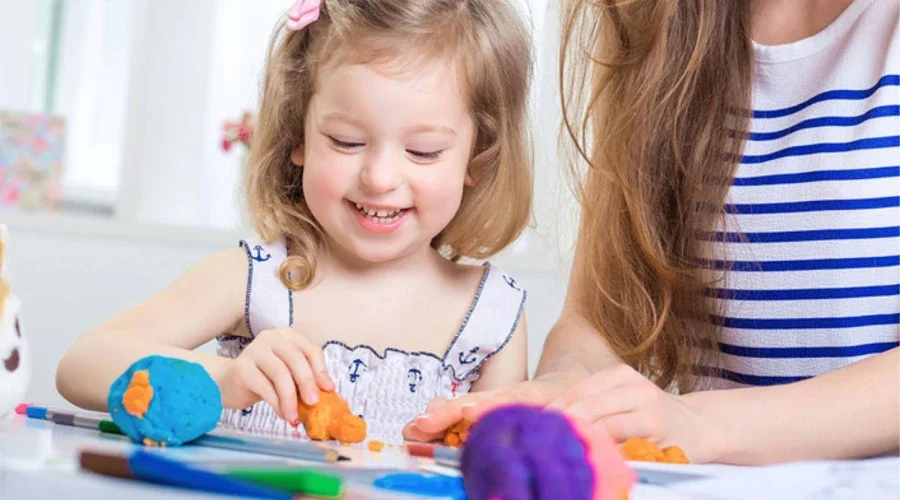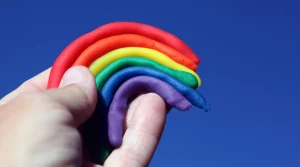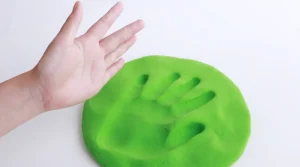
What Is the Science Behind Playdough? Uncover the Chemistry
What makes playdough soft, stretchy, and long-lasting? Explore the chemistry and physics behind this classic sensory material in a fun way.
#1 Toys Manufacturer in China. WhatsApp: +86 180-0088-4063. Email: [email protected]
#1 Toys Manufacturer in China. WhatsApp: +86 180-0088-4063. Email: [email protected]

Want to know how to make non-toxic playdough? The key lies in understanding the chemistry involved.
The chemistry behind playdough is actually simple. It’s about selecting the right ingredients and understanding their interactions, resulting in a safe, fun, and educational toy for children.
Playdough is more than just a toy. It is a gateway to endless creativity and sensory exploration.
The sensory experience of shaping playdough stimulates children’s thinking and fine motor skills. They can transform a simple ball of dough into a fantastical creature or a complex model.
The special thing about non-toxic playdough is that it gives parents peace of mind. The safe and natural ingredients allow children to explore freely.
In today’s world, dominated by mobile phones and computers, playdough serves as an important educational toy to keep children away from screens and virtual environments.
Traditional playdough ingredients are made from a mixture of simple kitchen staples and a few special ingredients, with the core ingredients including:
To add the right texture and pliability, a few other ingredients are often added:
In commercial applications, additional elements are sometimes included to improve shelf life and texture:
With this ingredient list, it’s easy to see why playdough has always been a favorite toy for kids. The simplicity is its magic, and the non-toxic and safe ingredients make it an enduring favorite for kids and parents alike.
Is playdough toxic? – This is the biggest concern of many parents. Normally, playdough is child-friendly, non-toxic and safe. However, we should be wary of some unscrupulous merchants using inferior formulas to produce toxic playdough.
Food coloring is edible and has long been used to color various foods, making it the best alternative to artificial dyes.
In homemade playdough, we can do without preservatives. However, in commercials, preservatives are essential for extending shelf life, so we should choose safe and non-toxic alternatives.
Fragrance is a complex chemical system, and food substitutes such as sesame oil and cardamom can be used in the kitchen. When purchasing, you can look for EN71 and CE certification to ensure that playdough does not contain toxic and allergenic chemicals.
As parents, ensuring our children’s safety is paramount, especially when it comes to the items they play with. Playdough, a timeless favorite, offers endless fun but also poses potential risks if not made with safe ingredients.
Bright colors make playdough more appealing, but synthetic dyes can be harmful. Natural dyes are a safe, environmentally friendly alternative.
These natural food dyes not only avoid the chemicals found in synthetic dyes, but also allow children to appreciate the wonders of nature.
Traditional binders and fillers may contain questionable chemicals. However, alternatives such as flour, corn starch, and cream of tartar are non-toxic and safe.
These ingredients ensure that the playdough is soft, flexible, and completely safe for little hands. Moreover, they are easily available, so they do not increase the manufacturing cost.
Commercial playdough is often supplemented with preservatives to extend its shelf life and prevent mold growth. However, unscrupulous merchants use harmful, cheap preservatives. They can be harmful if ingested or come into contact with the skin for a long time.
Therefore, when making non-toxic playdough, we all consider using natural alternatives, such as salt.
Salt is a natural preservative that inhibits bacterial growth. In homemade playdough recipes, we can also add vinegar to extend the shelf life. These natural preservatives not only extend the life of the playdough, but also ensure that it is kid-friendly.
Making your own non-toxic playdough at home is not only a fun project, but it ensures your children are playing with safe, natural materials. Have fun making your own playdough and learn about the simple recipe and the science behind it.
Making playdough at home is easy and only requires a few basic ingredients. Here’s a simple recipe to get you started:
Ingredients:
Instructions:
This simple recipe ensures playdough is safe and free of harmful chemicals, allowing for hours of imaginative play.
The chemistry behind clay is a synergy of ingredients:
Even with the best recipes, things can go wrong sometimes. Here are some common problems and how to fix them.
| Issues | Why | How to Solve |
|---|---|---|
| Too Sticky | Too much water in the playdough | Try adding more flour, a tablespoon at a time, and kneading until it's not sticky |
| Crumbly and Dry | Too little water in the playdough | Add a little water or drops of vegetable oil and knead |
| Fading | High temperature or prolonged exposure to the sun | To maintain the bright colors, store your playdough in a cool place and away from direct sunlight. |
| Mold Growth | Prolonged exposure to air | Store your playdough in an airtight container when not in use. Adding a little extra salt can also help inhibit bacterial growth. |
We can add some fun elements to our play dough to enhance the sensory experience. Here are some safe additives to consider.
| Additives | Use | Common Items |
|---|---|---|
| Essential oils | Add a pleasant scent to your play dough | Lavender, lemon, or peppermint oil |
| Texture | Make the play dough more fun to touch and manipulate | Rice, oats, or sand |
| Glitter | Sparkly effect | Glitter powder or flakes |
To ensure that non-toxic playdough remains fresh and pliable, proper storage is key.
1. When you’re not using playdough, always keep it in an airtight container.
This prevents it from drying out and hardening. Plastic containers with tight-fitting lids work well, but resealable plastic bags are also a good choice.
2. Store playdough in a cool, dry place.
Keeping it away from direct sunlight can prevent fading and preserve its texture.
To extend its shelf life, you might also consider storing playdough in the refrigerator, which helps stop any potential mold growth, especially in humid climates.
3. If you notice that your playdough is starting to dry out, you can revive it by adding a few drops of water or a bit of vegetable oil.
First, choose food-grade ingredients.
You can check the ingredient list on the package. Flour, salt, water, and natural food coloring are all good bases and safe to consume.
Second, avoid buying playdough that contains any ingredients that may cause allergies or skin irritation.
If your child is allergic to wheat, you can choose gluten-free playdough, which usually contains rice or corn flour.
Third, you can do a simple skin patch test.
Apply a small amount of playdough to your child’s inner wrist and wait for a few minutes to check for any allergic reaction. If no redness or irritation occurs, the playdough is most likely safe to use.
Finally, check the playdough regularly for signs of mold or odor. If you notice any signs, discard it immediately and clean the storage container.
Buying non-toxic play dough ensures that children of all ages can play safely.
Today, play dough ingredients have evolved countless times and are safe. We use the right ingredients and proper storage techniques, and conduct comprehensive safety testing before shipping. This gives parents peace of mind and allows children to enjoy the joy of free play!
Non-toxic playdough offers peace of mind, knowing it’s made from safe, natural ingredients. It allows children to explore and play without exposure to harmful chemicals, fostering creativity and fine motor skills.
Yes, non-toxic playdough is generally safe for children of all ages. However, supervision is recommended for very young children to prevent accidental ingestion.
Absolutely! Natural scents from essential oils and colors from food-grade dyes or natural sources like beet juice or turmeric can enhance the sensory experience, making playdough even more enjoyable.
Homemade non-toxic playdough can include natural preservatives like salt and vinegar to extend its shelf life and prevent mold growth. Commercial varieties might contain additional preservatives, so always check the ingredient list.
Store your non-toxic playdough in an airtight container or resealable bag in a cool, dry place. If necessary, you can also refrigerate it to prolong its freshness. Add a few drops of water or vegetable oil if the dough starts to dry out.
More Related...

What makes playdough soft, stretchy, and long-lasting? Explore the chemistry and physics behind this classic sensory material in a fun way.

Mixing playdough and slime: science, textures, and creative fun for kids. Learn what happens when these sensory materials come together!

Maximize your playdough and air dry clay’s freshness with easy storage tips and tricks that keep them soft and ready to use.

Playdough is a good craft toy, especially suitable for children aged 3+ to develop hands-on skills. Now let’s make a cute caterpillar craft.

Our team will answer your inquiries within 48 hours.
Copyright © 2025 GuangDong AKIA Technology Co,. Ltd. All Rights Reserved